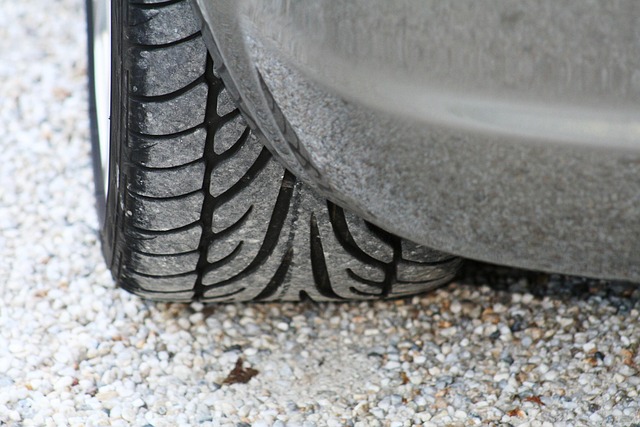How Low Temperatures Alter Rubber Compounds and Road Grip
Low temperatures change how rubber behaves and directly affect road grip. As air and surface temperatures drop, standard rubber compounds can stiffen, reducing flexibility and the ability of a tire to conform to irregularities in pavement or packed snow. Winter tire designs use specific compounds and tread features to retain pliability and maintain traction on snow, ice, and slush, while vehicle braking and handling characteristics also shift. Understanding these material and performance changes helps drivers and fleet managers make informed choices about pressure checks, rotation, storage, studs, alignment, and certification when preparing for cold months.

How does temperature affect rubber compound behavior?
Rubber compounds are blends of polymers, fillers, and additives chosen to deliver a balance of elasticity, wear resistance, and grip. Temperature changes alter the molecular mobility of those polymers: at lower temperatures many compounds become less flexible and more rigid, which reduces contact conformity and diminishes grip. Manufacturers formulate winter compounds with different polymer blends and plasticizers so the compound maintains elasticity at lower temperatures. This adjustment aims to preserve the contact patch and microscopic flexibility that allow tread elements to bite into snow and retain grip on cold pavement.
What changes in traction and tread performance occur?
Tread design and compound together determine traction. Softer, cold-rated compounds keep tread blocks pliable so sipes and edges can deform to bite snow crystals and irregular ice. Tread pattern depth and channel geometry help evacuate slush and compacted snow from the contact area, maintaining friction rather than letting a lubricating layer build up. On bare cold pavement, a tire’s ability to conform to texture affects both static grip and the transition to dynamic grip during cornering; winter-specific treads and compounds are engineered to improve these interactions without overstating performance in every condition.
How do snow, ice, and slush influence braking and handling?
Snow, ice, and slush each present different friction regimes. Packed snow can provide predictable resistance if a tire’s tread can pack and lock snow into block cavities; this snow-on-snow interaction can improve traction compared with bare ice. Ice generally offers very low friction and relies more on tread edges and, where legal and appropriate, studs or other mechanical aids. Slush and standing water risk hydroplaning, so tread channels that disperse fluids reduce the chance of the tread losing contact. These surface factors change braking distances and handling balance; electronic systems such as ABS and stability control interact with tire behaviour, but they cannot fully compensate for inadequate grip.
How does wear, rotation, and pressure relate to cold conditions?
Colder temperatures influence wear patterns and recommended maintenance. Because winter compounds are formulated differently, they may show different wear rates than summer or all-season tires, particularly if used on warm pavement. Regular rotation helps equalize wear between positions and preserve traction over the season. Tire pressure is also temperature dependent: air contracts as it cools, so pressures can drop as seasons change; maintaining pressures at manufacturer-recommended levels ensures the intended contact area and even wear. Check pressure when tires are cold and follow vehicle and tire maker guidance to avoid premature wear or compromised grip.
When are studs, alignment, and certification relevant?
Studs can improve mechanical grip on clear ice in some jurisdictions, but they change pavement wear and can be restricted by law. Alignment affects how evenly the tire meets the road: incorrect toe or camber can reduce the effective contact patch and accelerate wear, which in turn harms traction. Certification marks such as the Three-Peak Mountain Snowflake (3PMSF) identify tires that meet defined performance criteria for snow traction; such testing and certification can help compare products without relying on marketing terms. Always verify local regulations and certification labels when selecting tires or studs.
What role does testing and proper storage play?
Testing—both laboratory and real-world—helps quantify how compounds and treads perform at low temperatures. Manufacturers and independent testers use cold-weather braking, handling, and wear assessments to characterize performance across snow, ice, slush, and cold dry pavement. For storage, tires kept for seasonal use should be stored in a cool, dry, dark place away from direct sunlight and ozone sources (such as electric motors). Protecting tires from heat and sunlight and storing them upright or stacked according to maker recommendations helps preserve the compound properties until the next season, so that expected grip and safety characteristics remain closer to design.
Conclusion
Low temperatures change the physical behavior of rubber compounds and, by extension, traction, tread effectiveness, braking, and handling. Winter-specific compounds and tread designs aim to mitigate stiffness at low temperature and manage snow, ice, and slush differently than summer or all-season tires. Effective maintenance—pressure checks, rotation, alignment—and attention to storage, testing, certification, and local rules on studs help preserve performance and reduce risk when driving in cold conditions.






